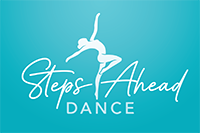We are committed to providing a healthy and safe environment for dancers to reach their personal, technical, and artistic potential throughout their various stages of development.
At Steps Ahead Dance the safety and health of our students, teachers, guests and community have always been our highest priority. We follow safe practices from the Imperial Society of Teachers of Dance, Acrobatic Arts and the Royal Academy of Dance.
Assumption of Risk
Participation in dance/acrobats involves motion, rotation, and height in a unique environment and as such carries with it a reasonable assumption of risk. At Steps Ahead Dance, our first obligation is to the safety of the student. We provide this safety through education, supervision, and instruction. We also believe that it is our responsibility to educate the parents/guardians and/or the student of the possible risks involved.
Although our programs focus on basic floor and tumbling activity, like any other athletic activity, dance/acrobats subjects the human body to forces that can cause injury. Specifically, we feel it is our obligation to communicate the following information: No matter how careful the dancer/acrobatic and instructor are, no matter how many spotters are used, and no matter what heights or landing surface exists, the risk cannot be eliminated. The risk of injury includes minor injuries such as bruises and more serious injuries such as broken bones, dislocations and muscle pulls.
We ask that you review the guidelines and discuss them with your child.
Health and Safety Policy
Steps Ahead Dance recognizes the duties we have under the Health and Safety Acts and Regulations to ensure the safety and health & well-being of all dancers, teachers, volunteers and assistants whilst they are involved with us during class or at events.
Our recognized responsibilities are as follows:
- Provide a safe and healthy environment for dancers and teachers to rehearse and train within. This environment will have all risks identified and appropriately controlled to minimize or eliminate the possibility of harm and accidents
- Provide a first-aid kit
- Ensure all dancers are appropriately dressed prior to commencing a class with all jewellery removed, any injuries or other health issues have been identified and the teacher has been notified
- Ensure all classes begin with a thorough warm-up
- Ensure all emergency exits are clearly signposted and are unobstructed
- Ensure that appropriate procedures are in place in the event of an emergency such as a fire, accident or any other incident that may occur. These procedures will be trialled and assessed regularly to ensure they are adequate.
- Ensure that all staff members have a basic knowledge of First Aid
- Review all procedures regularly, ensuring that any additional measures are put into place when required
Ensuring that the responsibilities acknowledged in the policy statement are met, along with the risk assessments and accident records, will help ensure our school meets all legal requirements.
The dancer’s responsibilities are as follows:
- Be on time – missing the warm-up is the most hazardous challenge our teachers deal with.
- Dress appropriately – your uniform and grooming are for safety as well as appearance.
- Safe learning practices demand mastering basic skills before progressing to more difficult levels
- Dance requires active concentration – horseplay cannot be permitted
- The readiness and ability level of the performer, the nature of the task, and the competency of the spotter all must be taken into consideration when attempting a new or difficult skill.
Accident and First Aid Policy
All accidents are to be recorded and shared with the Director immediately.
Minor injuries should be dealt with by staff, recorded and parents informed.
For more serious injuries, First Aid should not be administered without the permission of the child’s parent/carer. A child cannot give consent, however, if a child is seriously injured or unconscious then the situation should be dealt with immediately by a trained first-aider and another adult present. (911)
Head Injuries – however small, these incidents are always reported to the parents in case of concussion or any other medical reasons, and dealt with by a first-aider.
Major injuries, i.e. suspected broken bones – should only be treated by qualified first-aiders. Students should be not moved, they are to be kept safe until a first-aider arrives. The first-aider will inform the appropriate people and then complete an incident report.
